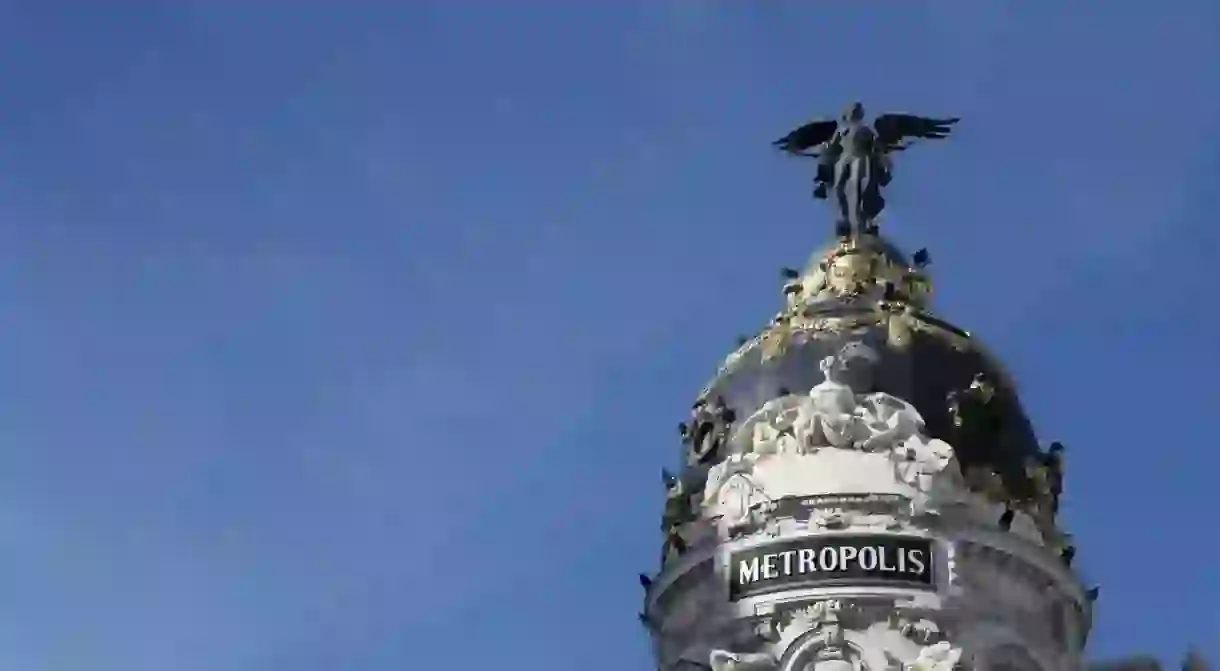How Madrid Became Europe's Gastronomy Capital

Madrid’s food scene is flourishing and the Spanish capital has a lot to offer no matter what your budget or tastes. From traditional taverns to Michelin marvels, we take a look at why Madrid is the most exciting place to eat in Europe.
Rich food culture
Madrid’s simple dishes, the kind Spanish grandmas rustle up regularly, are some of its best and most beloved. The city is famed for its cocido madrileño, a hearty chickpea and pork stew that is usually eaten for lunch in the autumn and winter and its traditional fast food is a delicious bocadillo de calamares (calamari baguette). Madrid doesn’t mess about when it comes to unusual cuts, either. Another classic (and not for the faint-hearted) is callos a la Madrileña, beef tripe mixed with chorizo and black pudding (blood sausage). Another local adventurous option is oreja a la plancha or pig’s ear.
http://instagram.com/p/_cZrnSQyte/?tagged=callosalamadrilena
The best seafood from around Spain
It seems like a paradox for somewhere so landlocked and over 300km away from the nearest coast, but Madrid has the best seafood in Spain. The choicest catch is whisked away from the ports around Spain straight to the capital, which amazingly is home to the second biggest fish market in the world (after Japans famous Tsukiji Fish Market). Madrid’s fish market, Mercamadrid, is not open to the public, but visitors can try some of the best fish and seafood in many of the capital’s bars and restaurants.
http://instagram.com/p/BV6xxZGFfZt/?taken-at=12846133
Food shopping
Unlike many other European capitals, Madrid has somehow managed to retain many of its family run businesses, lots of which have been going strong for well over 100 years. Browsing some of the city’s traditional shops makes every shopping trip a voyage of discovery in itself. One example is the city’s old bakeries; El Riojano was founded in 1855 by the personal patissier to the Queen. Today, its exquisite displays of cakes, chocolates and biscuits still look fit for a king (or queen). Just down the street from El Riojano is the heavenly aroma of La Malloquina, renowned for its napolitanas – chocolate or cream-filled pastries.
http://instagram.com/p/BEWdKnrEEqo/?taken-at=6426474
Regional delicacies
There is nowhere better in Spain than Madrid to sample the country’s varied and abundant cuisine; people from every corner of the country have made their homes – and their businesses – in the city. From Valencian paella and Galician octopus to mojo potatoes from the Canary Islands and Basque pintxos, whatever the regional speciality, you can sample it in the Spanish capital.

Michelin-starred meals
Madrid’s burgeoning fine dining scene is well worth exploring. Several Catalan chefs have decamped to Madrid and bestowed the city with some serious gastronomic clout. Santceloni earned its second Michelin star in 2005 and uses the finest ingredients to produce a new interpretation of Spanish cuisine. Ramón Freixa, another two-starred Michelin restaurant, is one of Madrid’s most exclusive, and delivers a daring and modern take on Mediterranean cuisine. But the crème de la crème of Madrid’s high-end food scene has got to be DiverXO, the city’s only three Michelin-starred restaurant. It is run by chef David Muñoz, who brings guests a fun and always surprising take on Spanish cuisine.
http://instagram.com/p/BV5yW4gAQVs/?taken-at=434838
An international palate
Madrid has long attracted many immigrants from Central and South America, who have brought their culinary traditions to the city. Whether you fancy authentic Mexican or Cuban cuisine or some Peruvian ceviche washed down with a refreshing Pisco Sour, Madrid is full of excellent options. The city also has some great North African and Indian restaurants.













